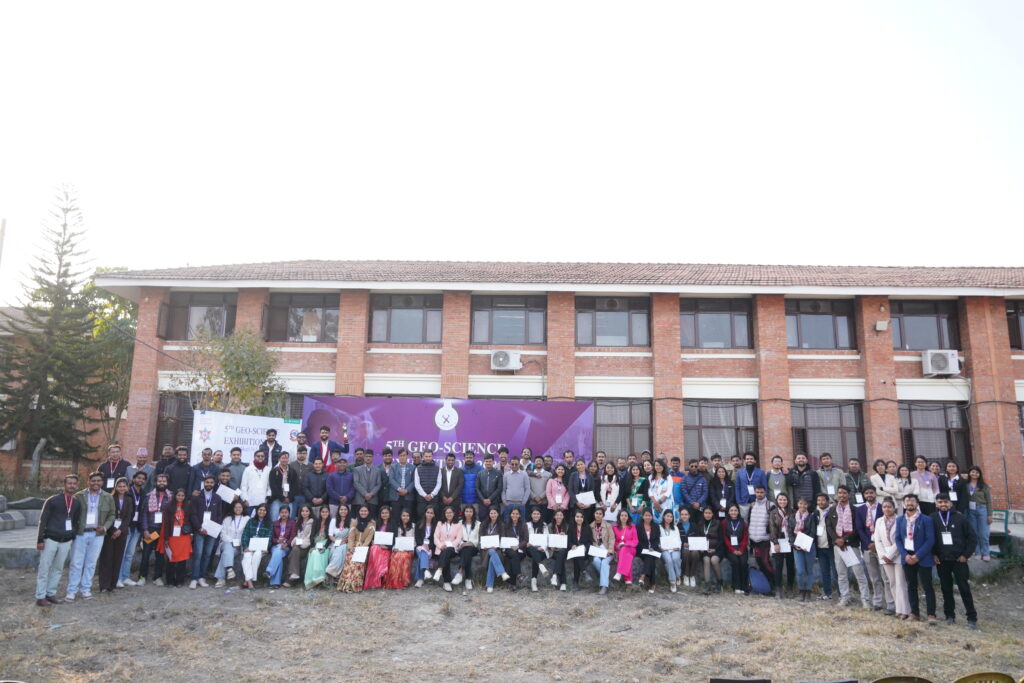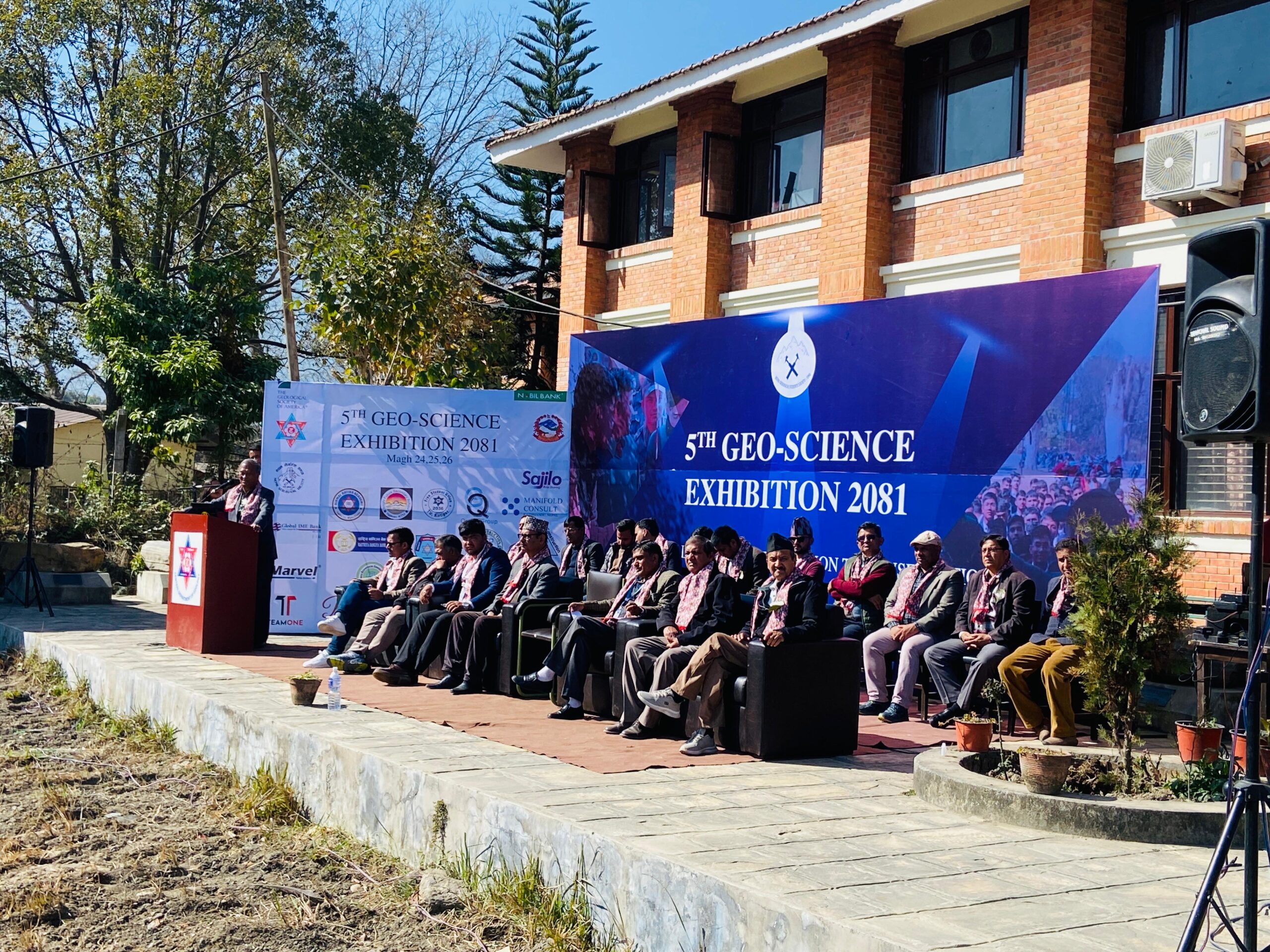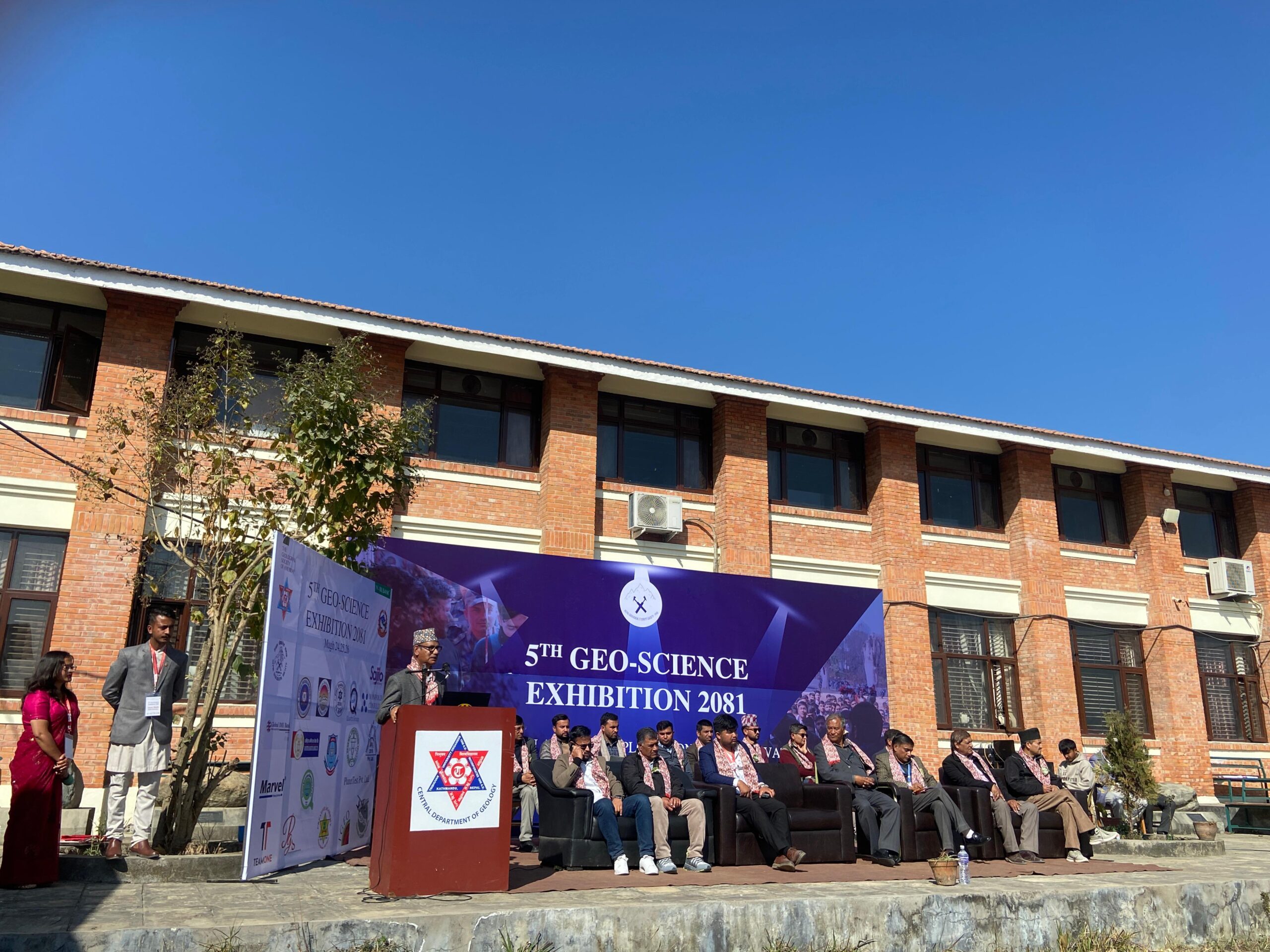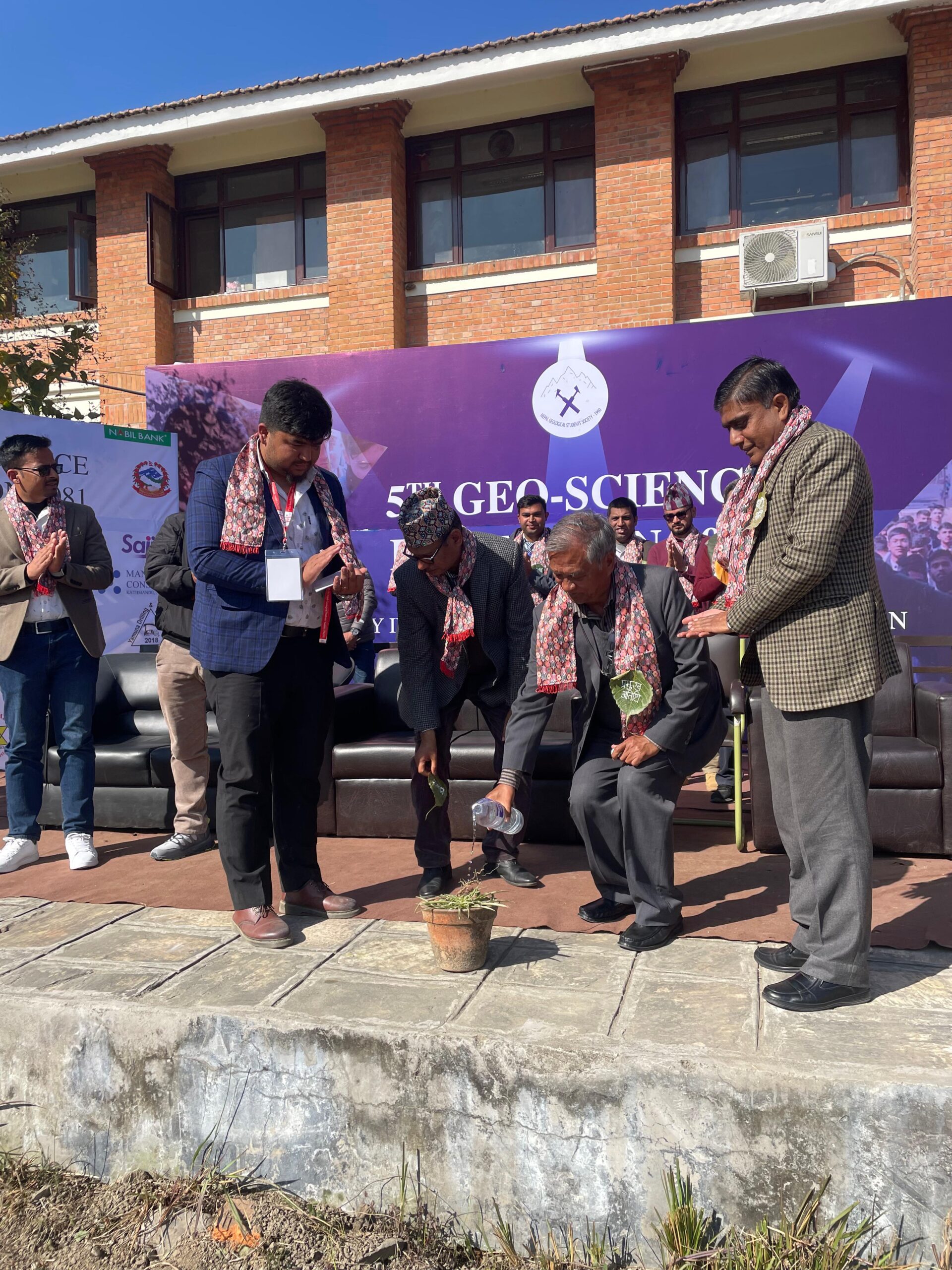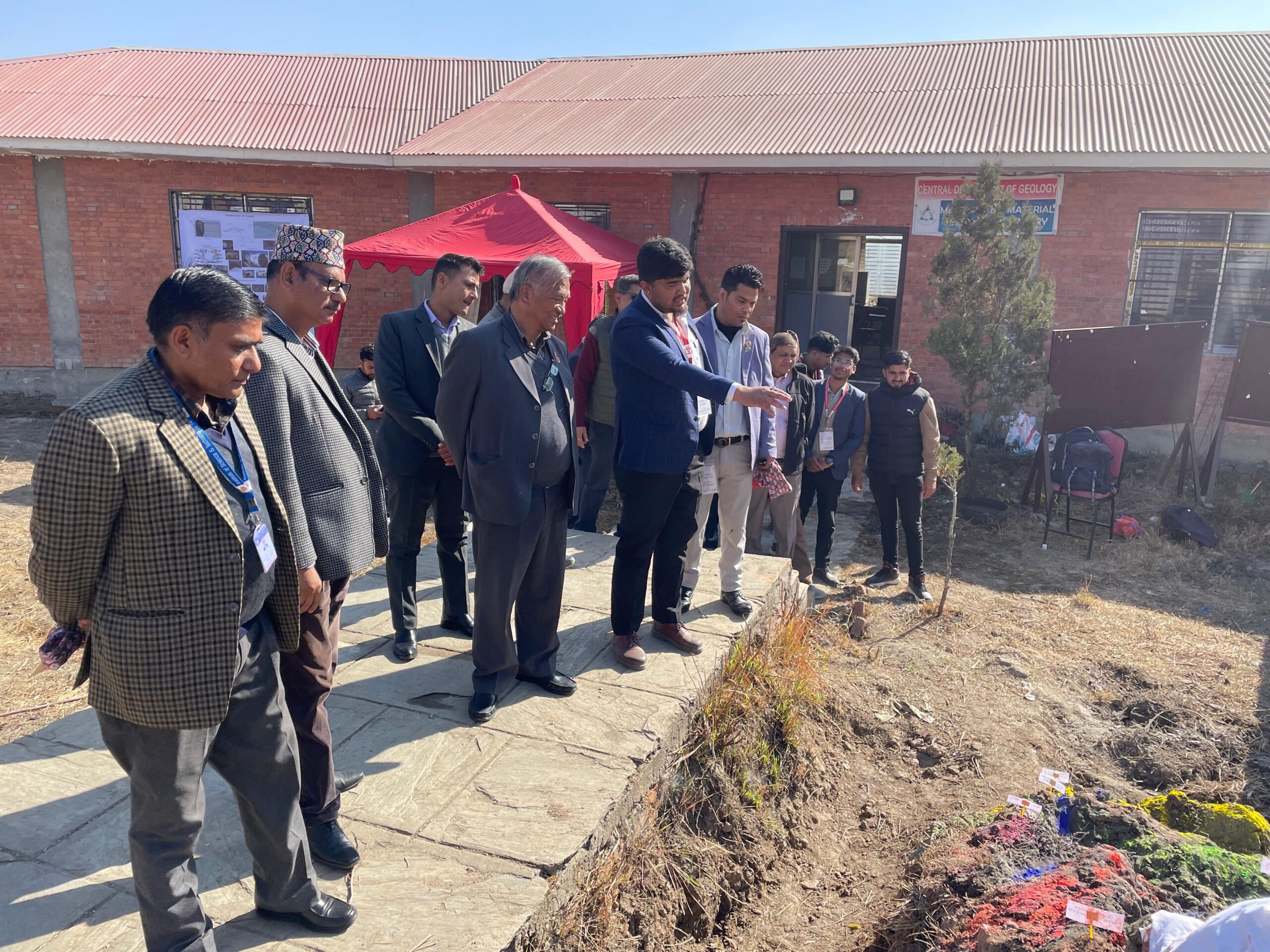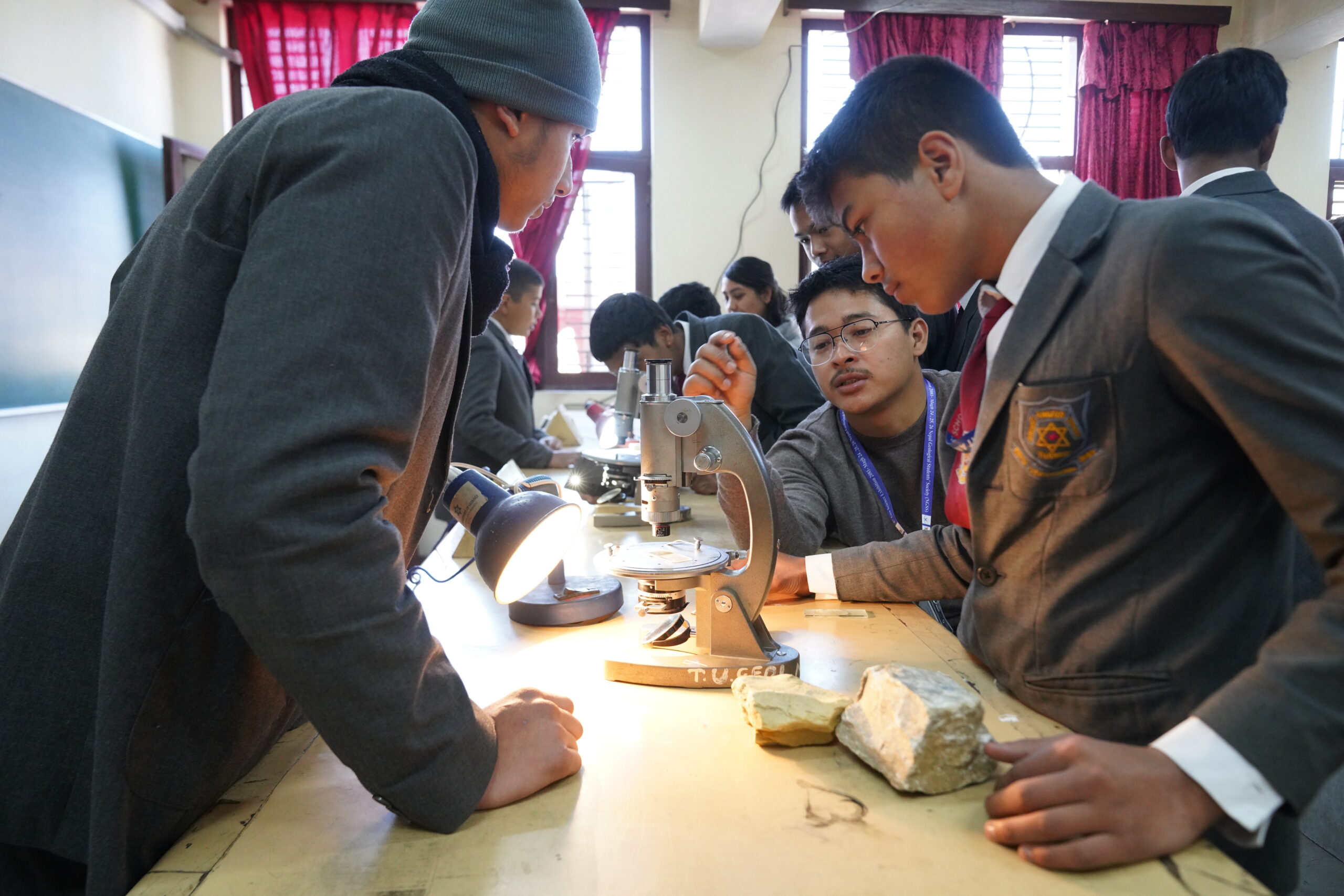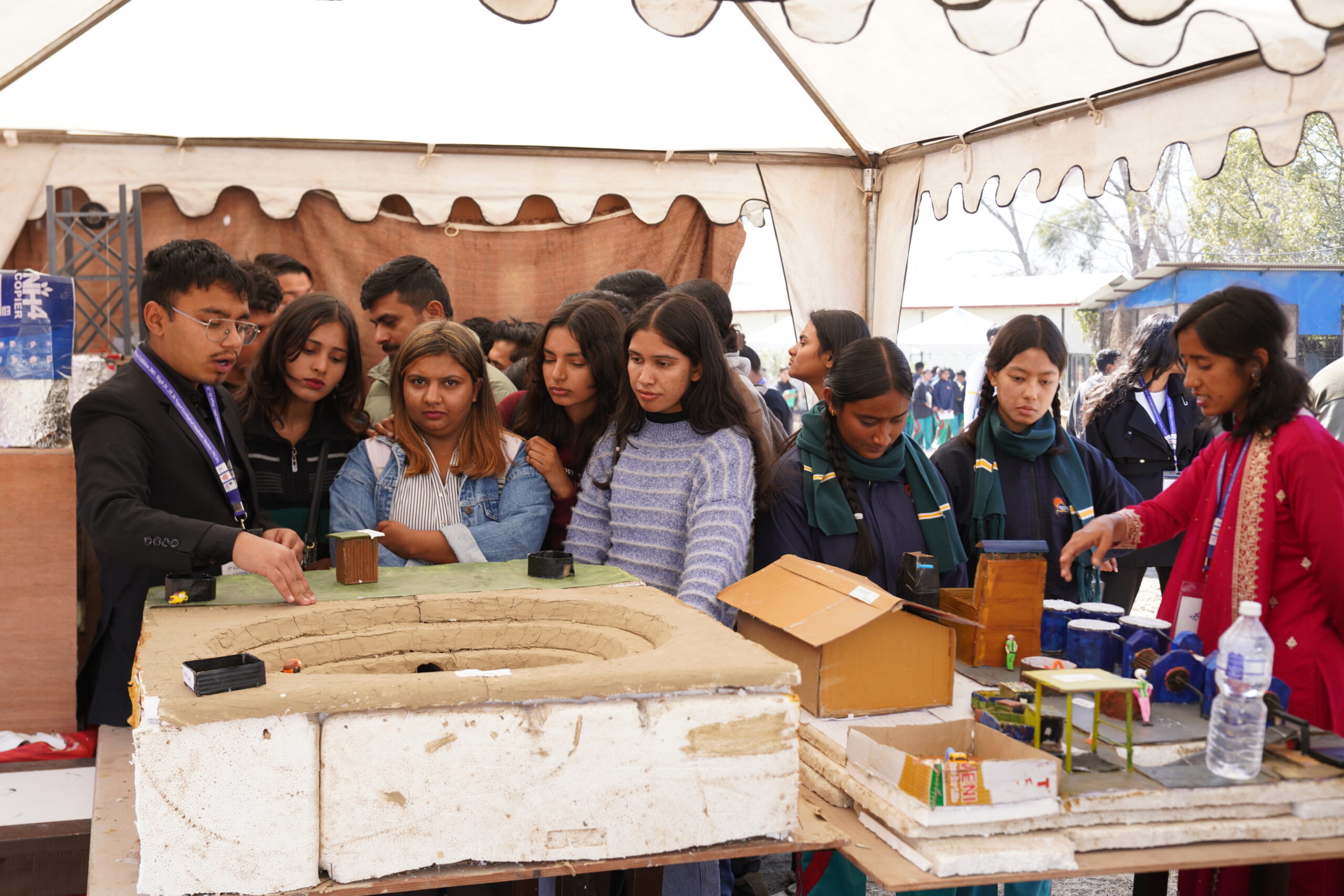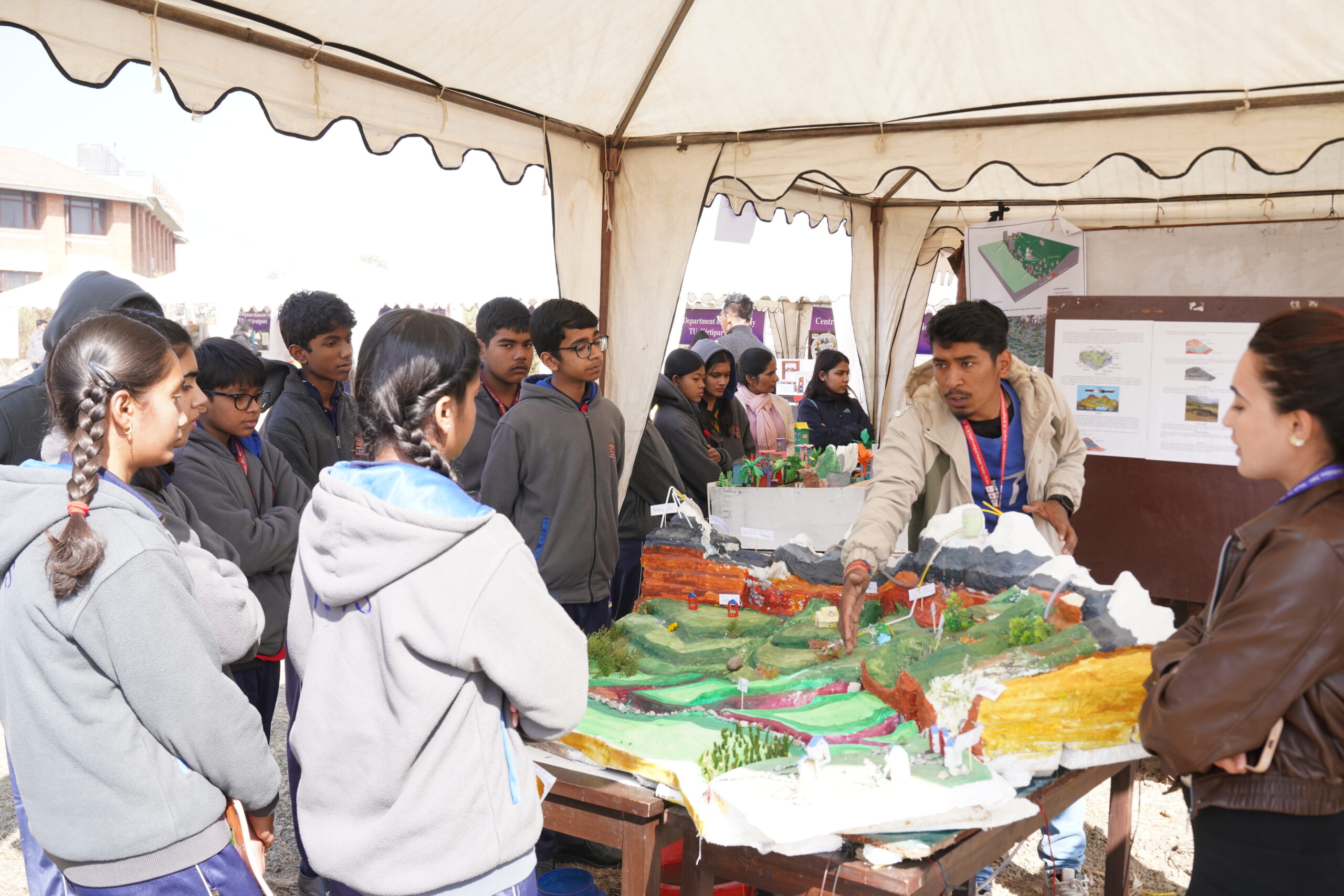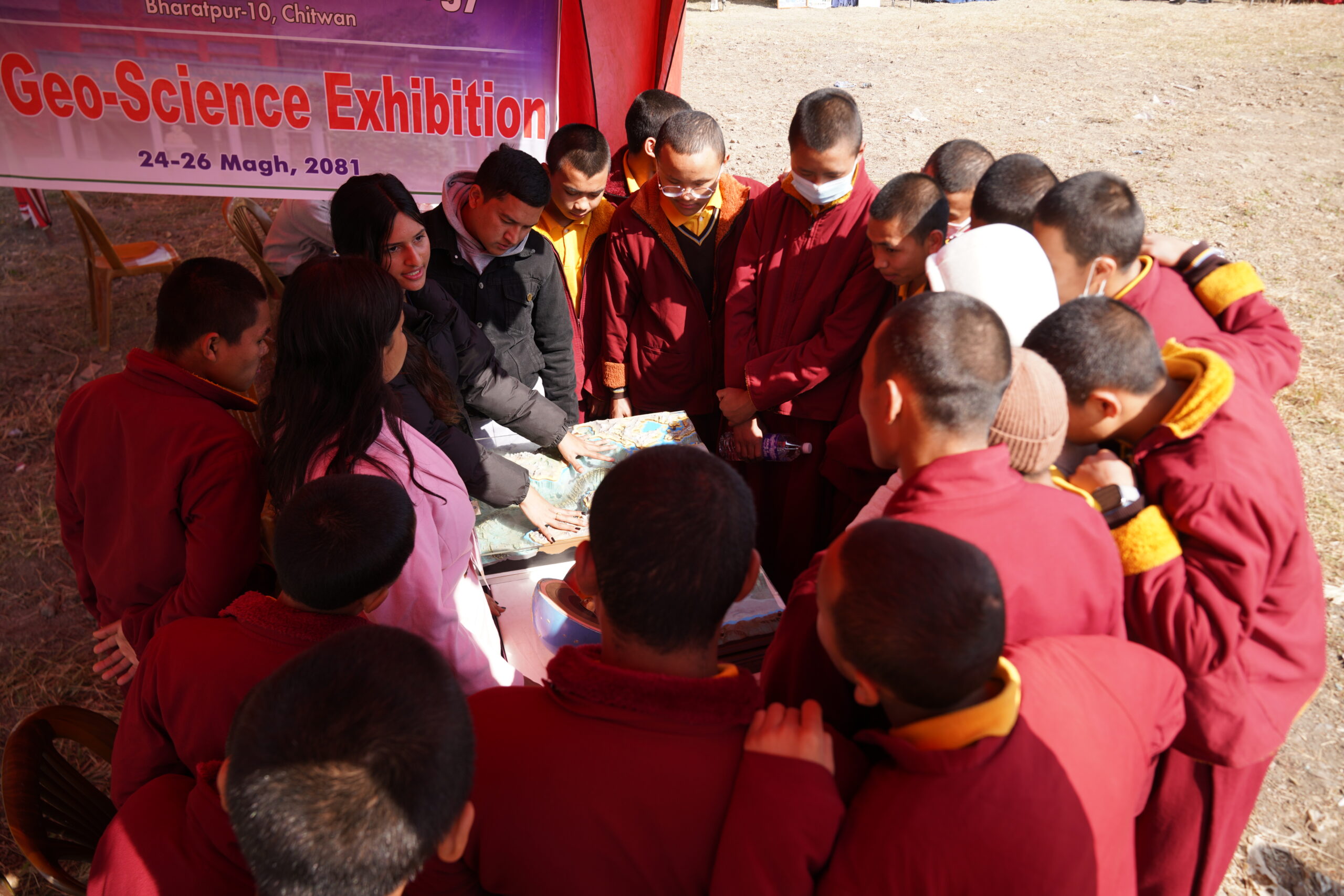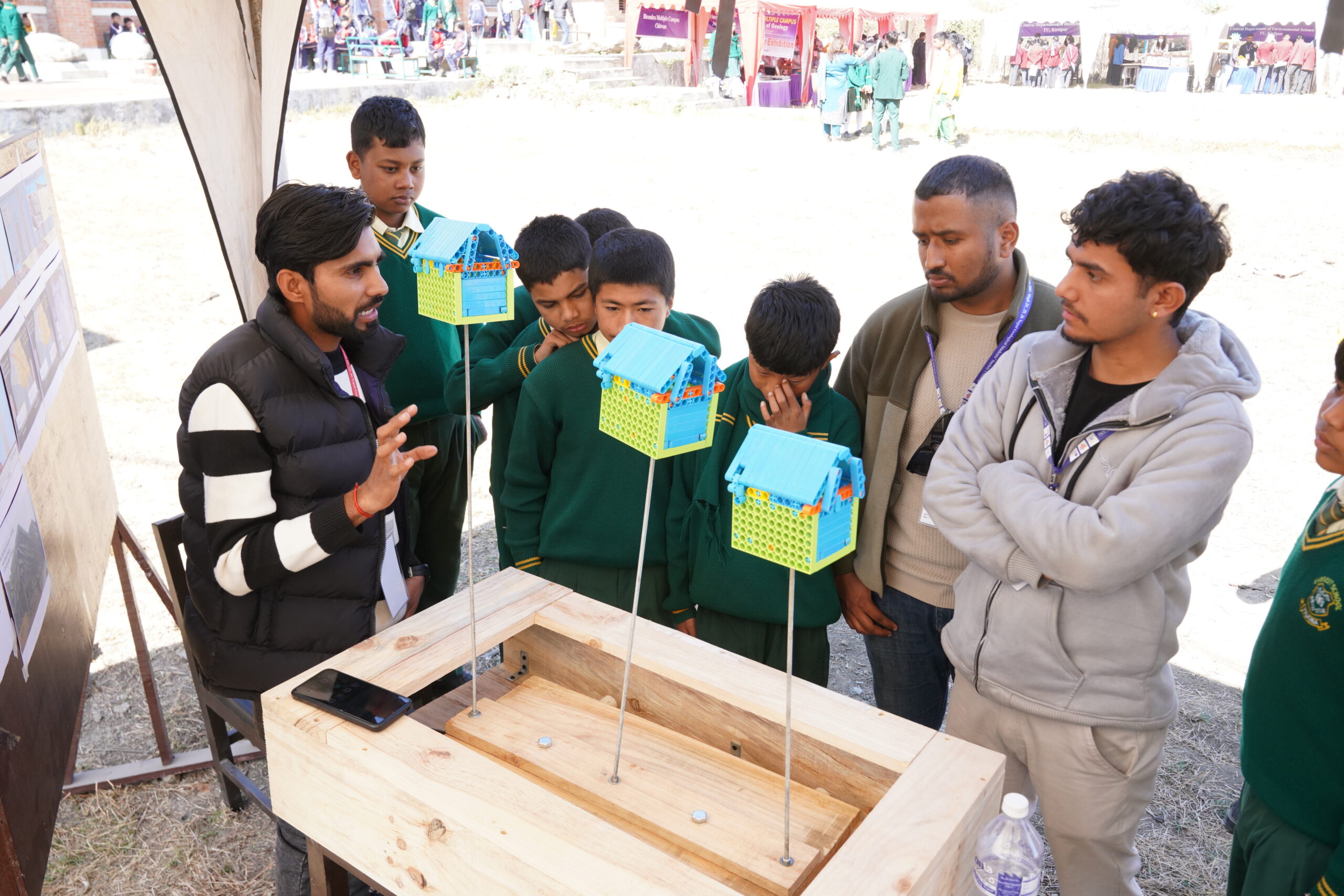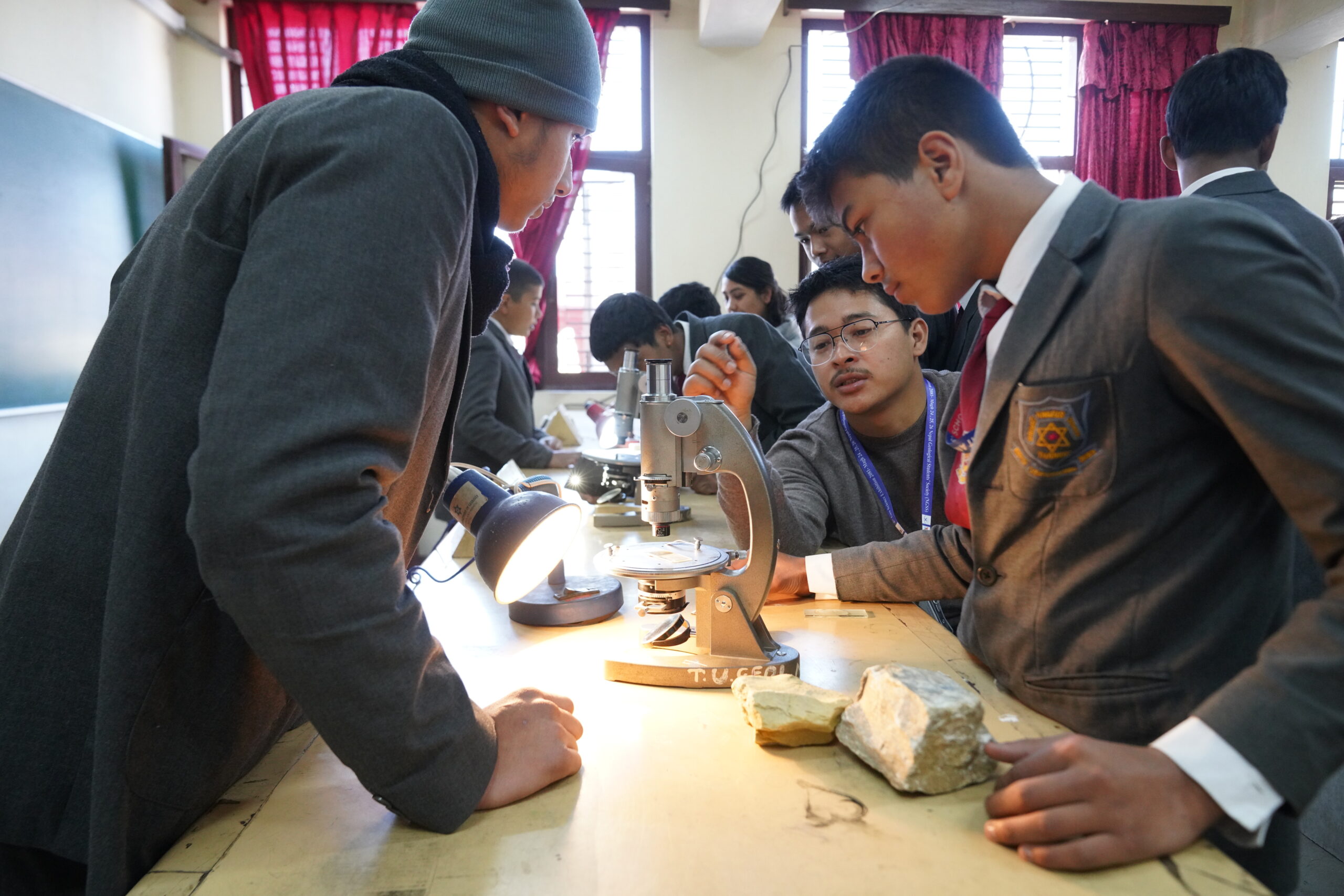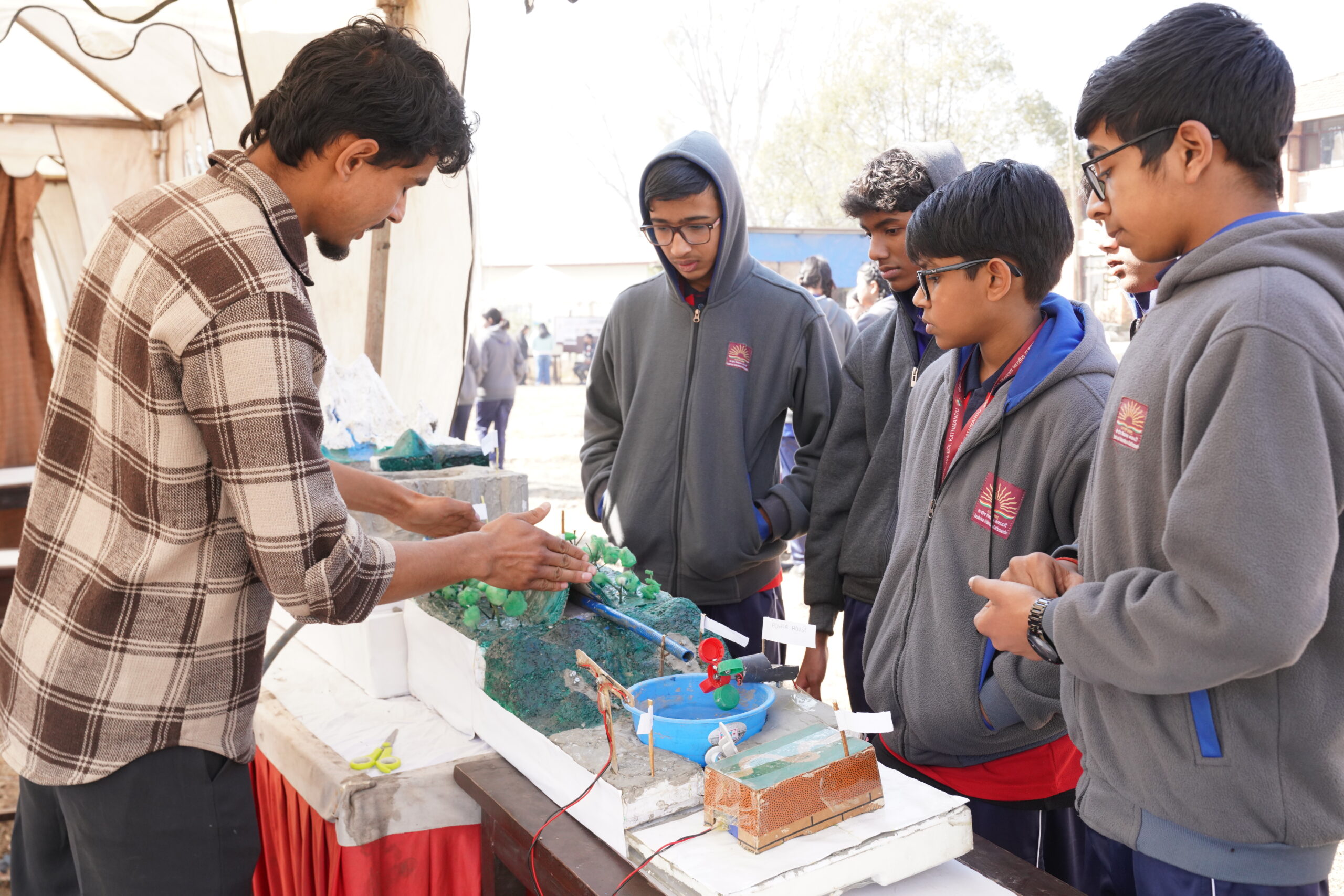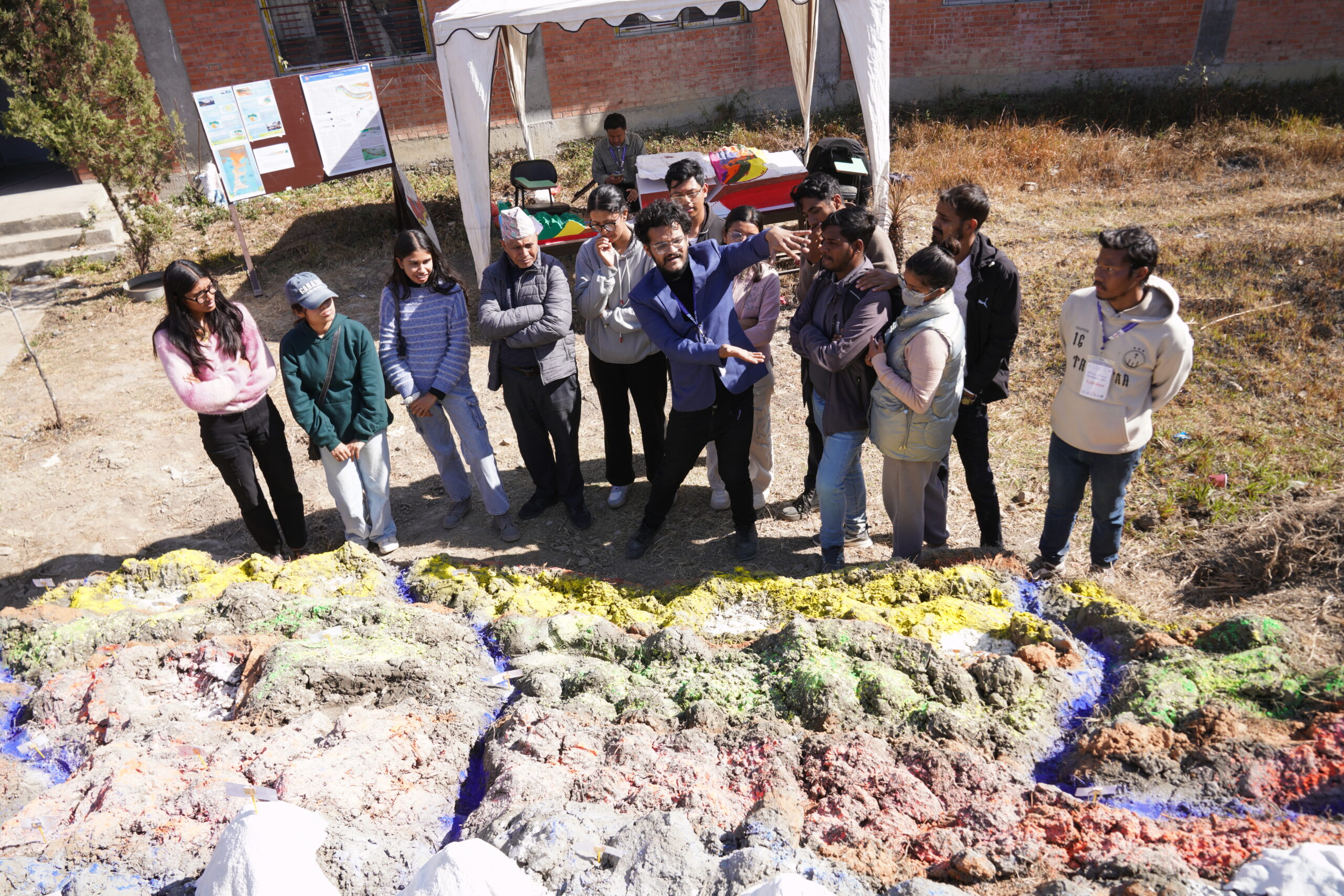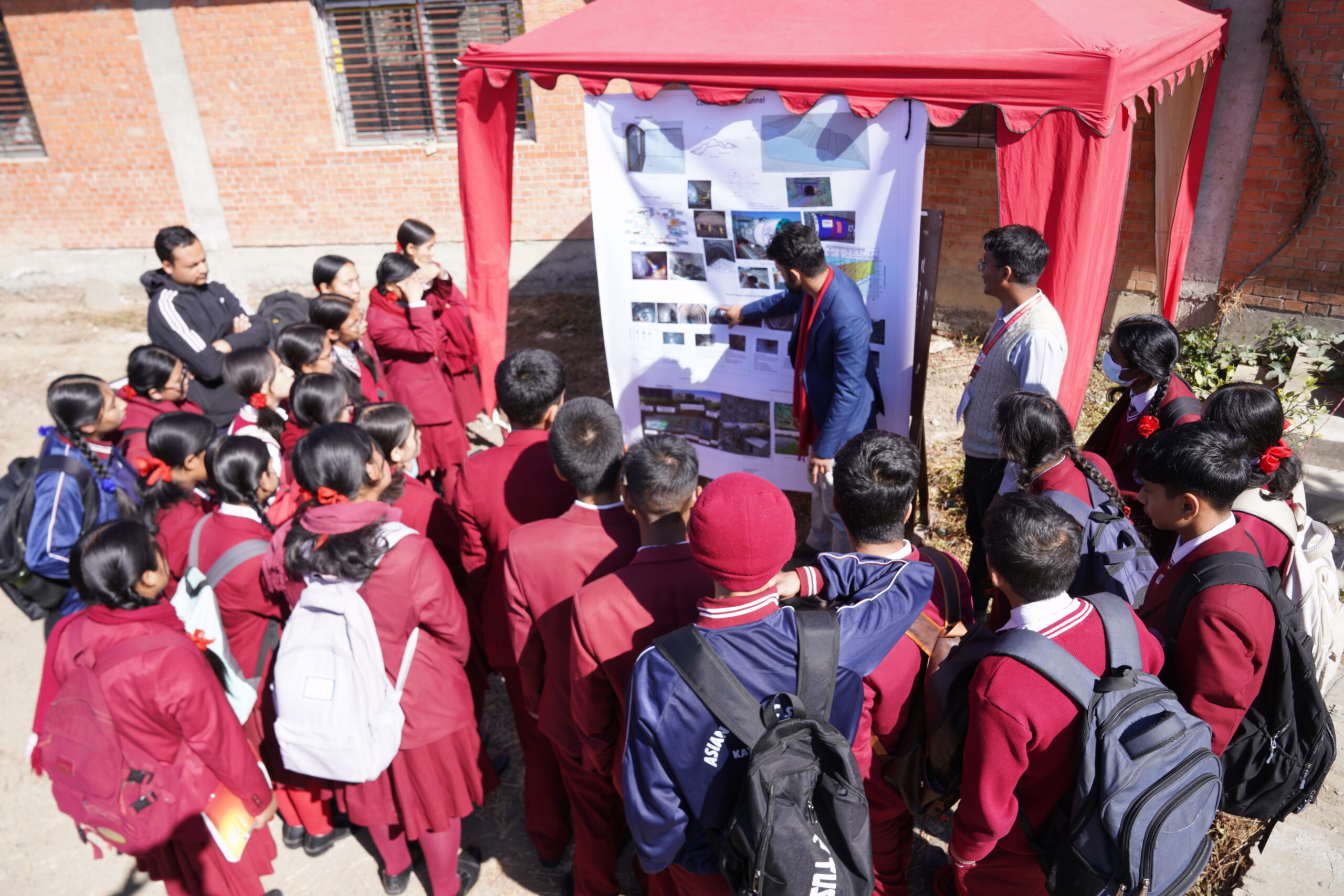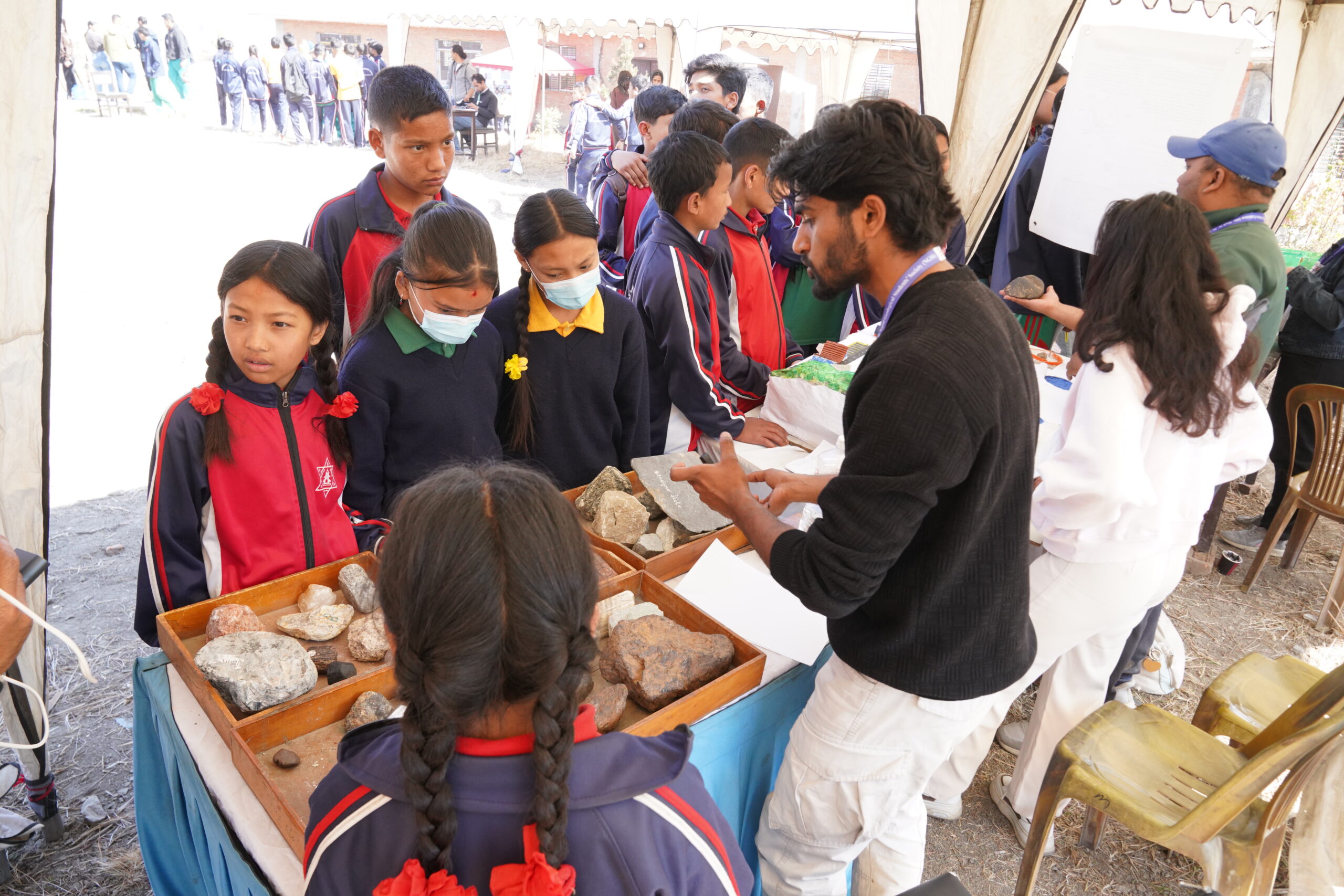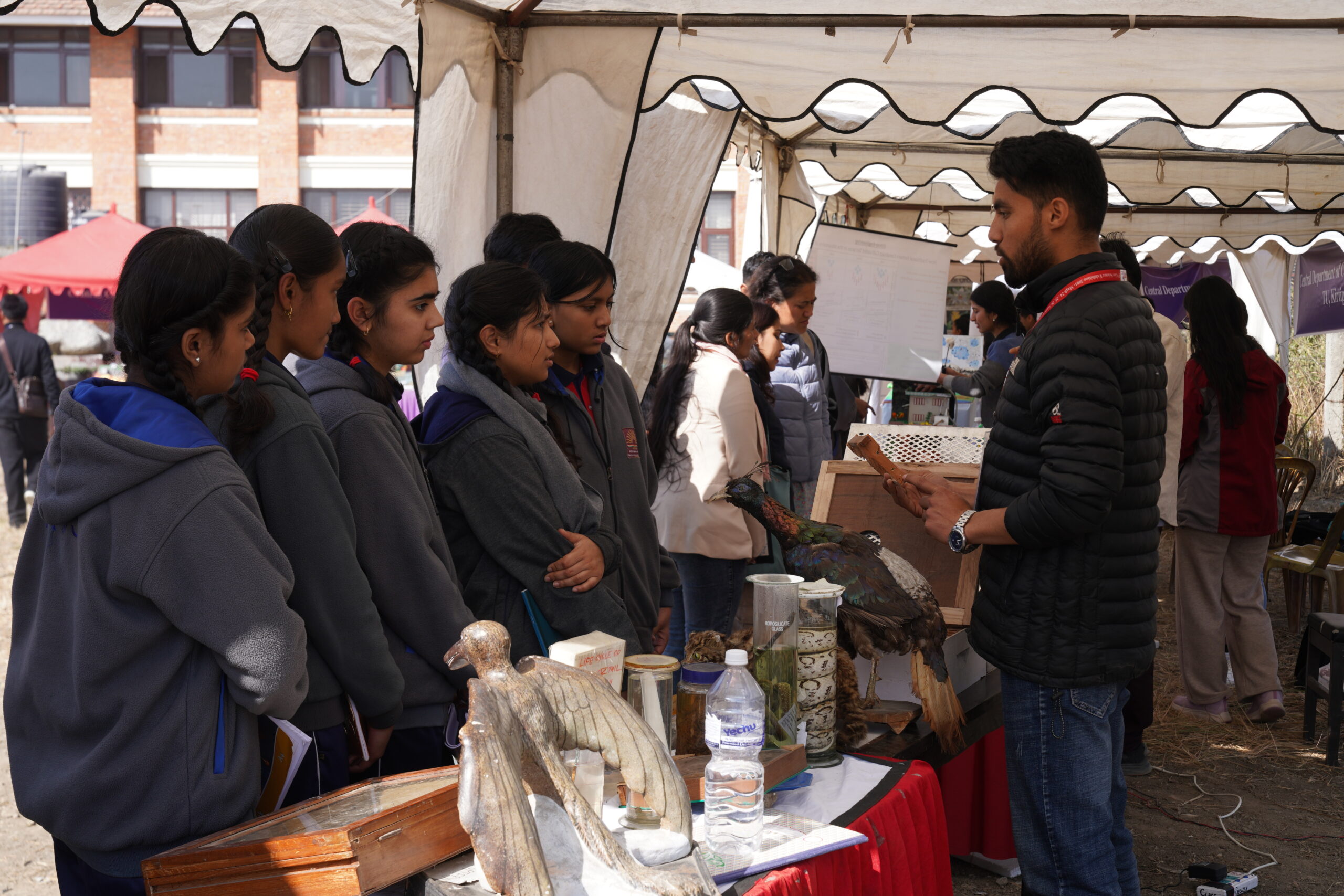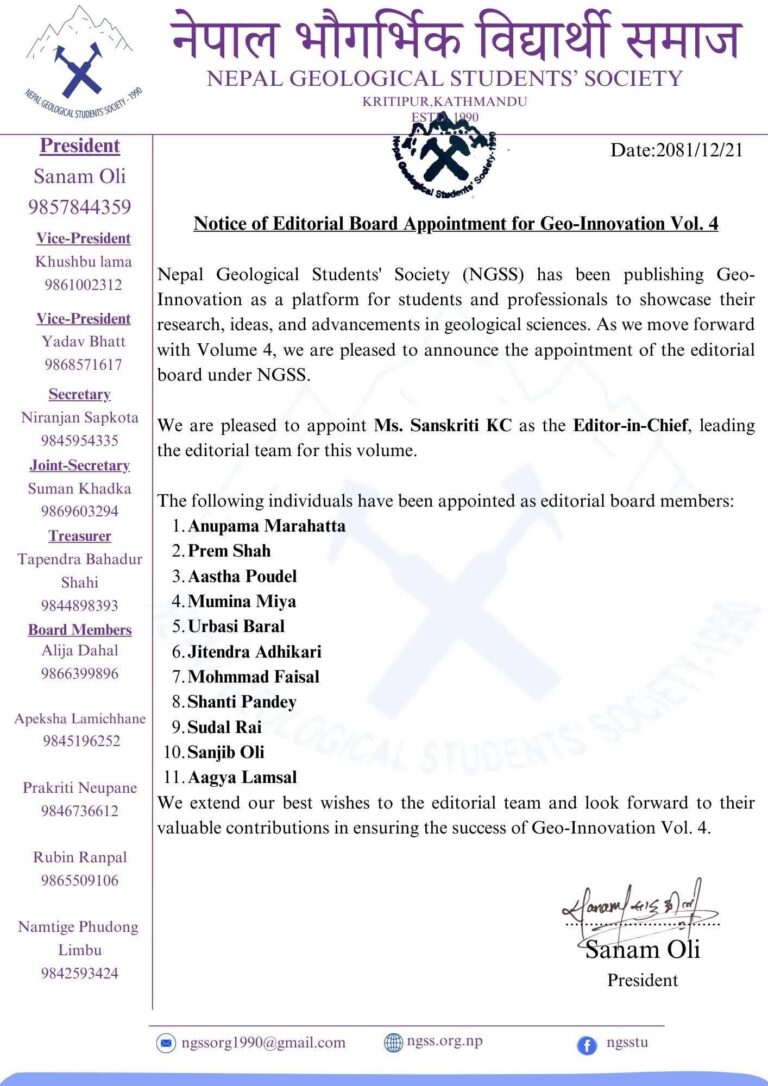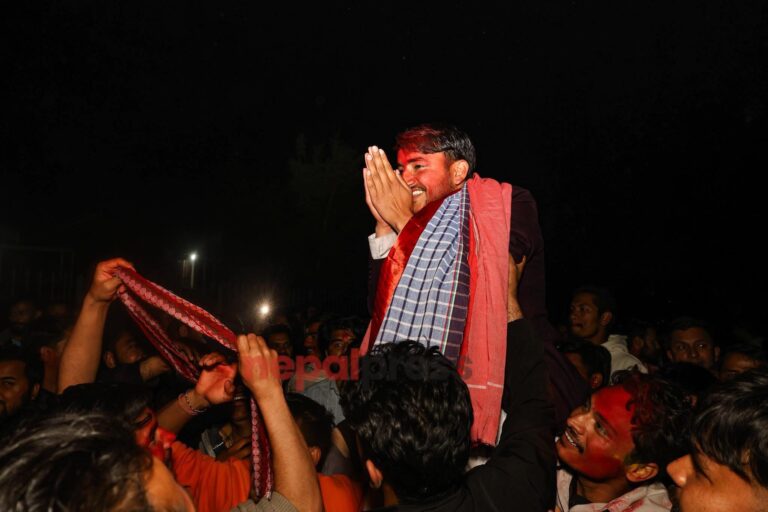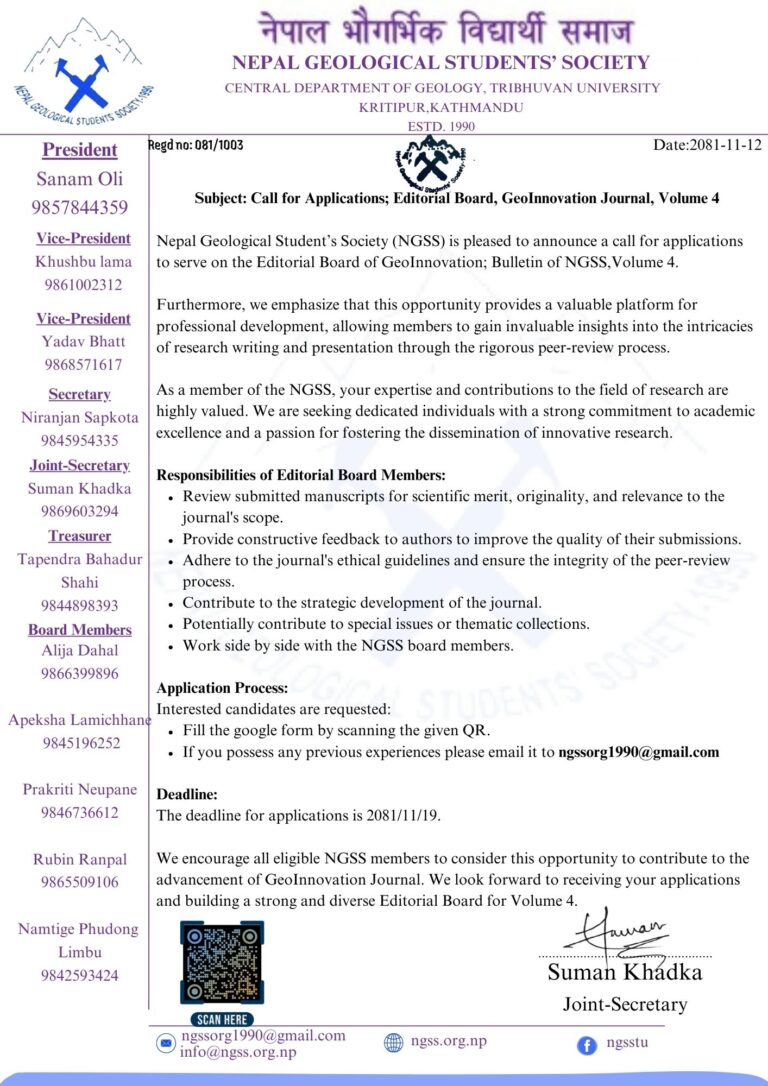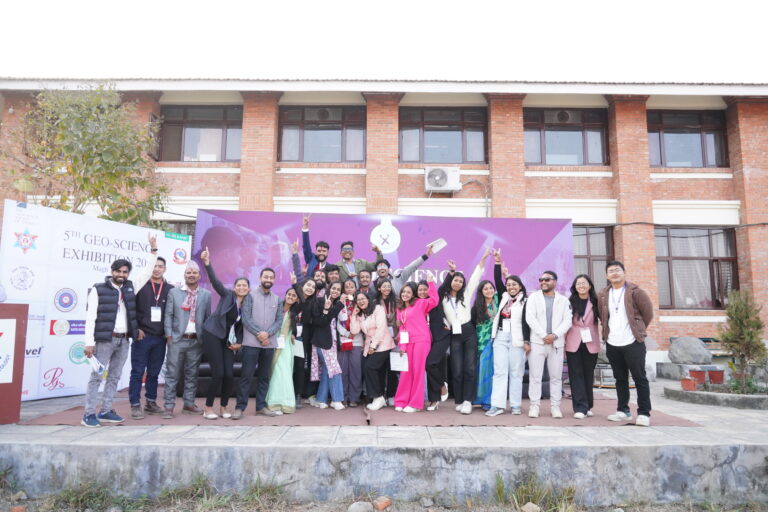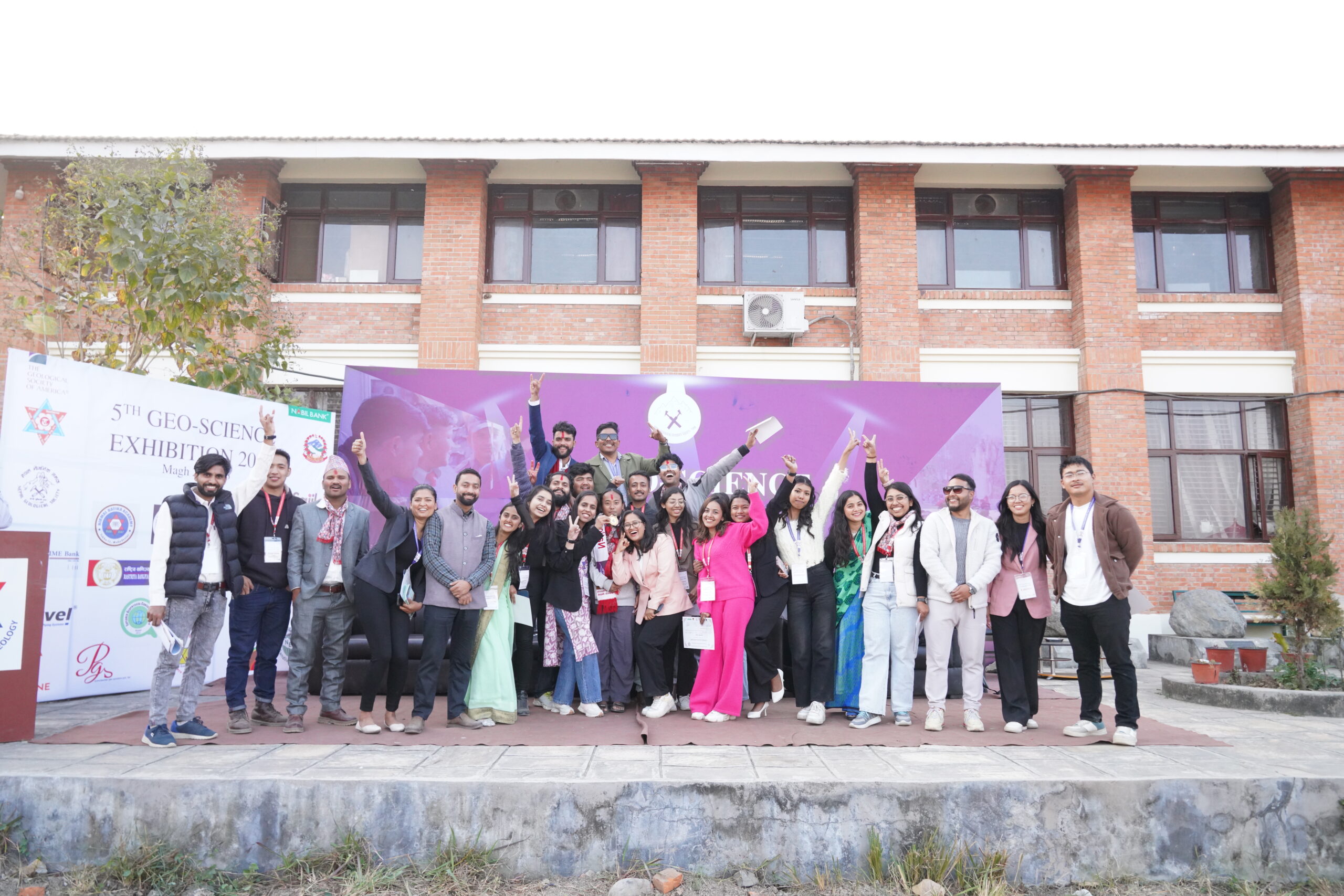
5th Geo-Science Exhibition
Geology in Action : Exploration to Conservation
About 5th Geo-science Exhibition 2081
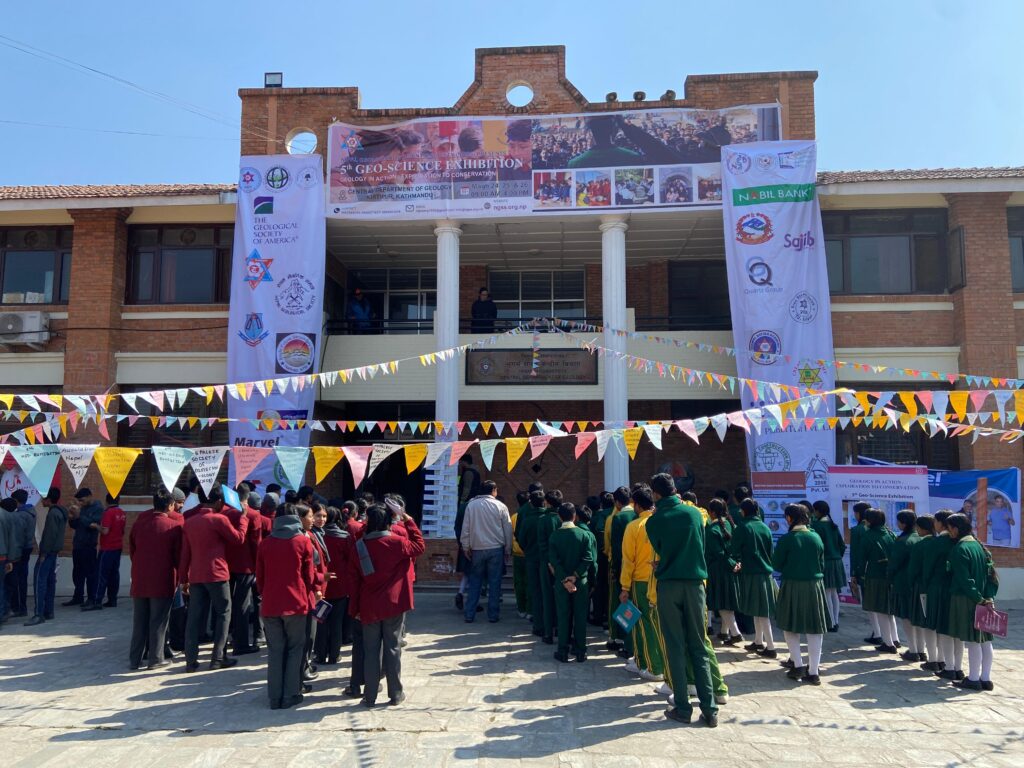
The fifth Geo-science Exhibition 2081, organized by the Central Department of Geology (CDG) and Nepal Geological Student’s Society (NGSS) and co-organized by Botanical Student Society (BOSS), Nepalese Society of Biotechnology (NSB), Student’s Association of Computer Science (SACN), Zoological Student’s Association of Nepal (ZOOSAN), Chemistry Student’s Association Nepal (CSAN), Microbiological Students Association of Nepal (MiSAN). The 3 day event was a landmark gathering that brought together a diverse community of students, researchers, professionals and the general public. The vibrant event aimed to celebrate the wonders of geosciences while fostering public awareness and knowledge sharing in the field. Held in a spirit of learning and collaboration, the exhibition served as a dynamic platform to showcase cutting edge research, practical applications and the crucial role geosciences play in shaping a sustainable future.
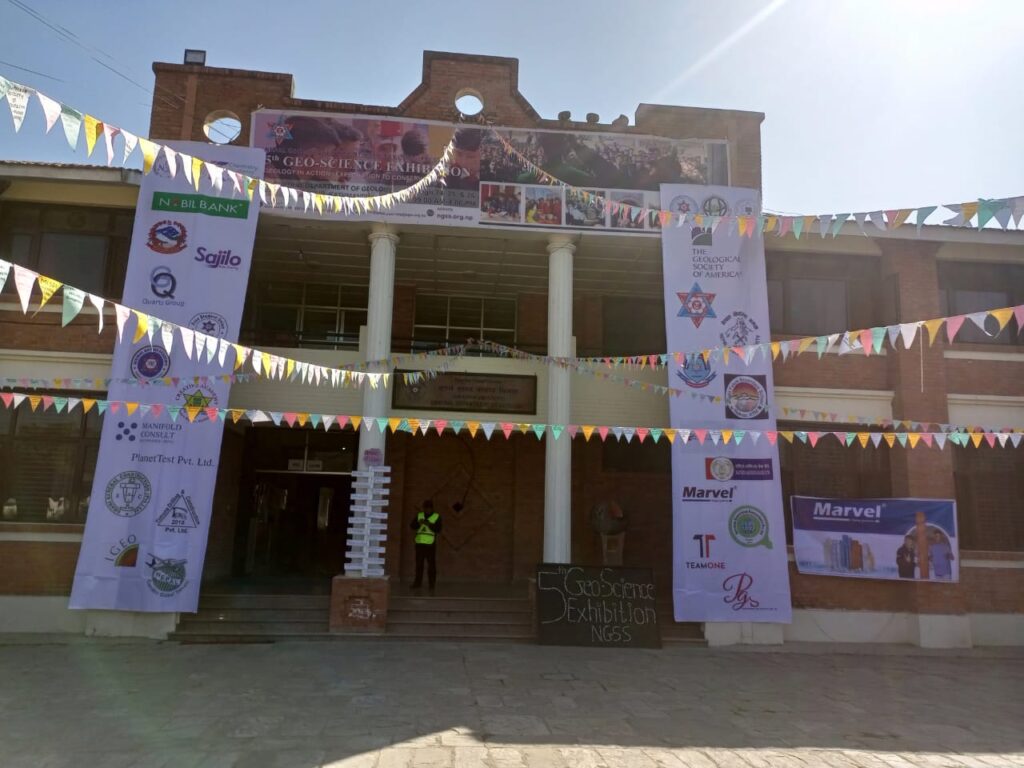
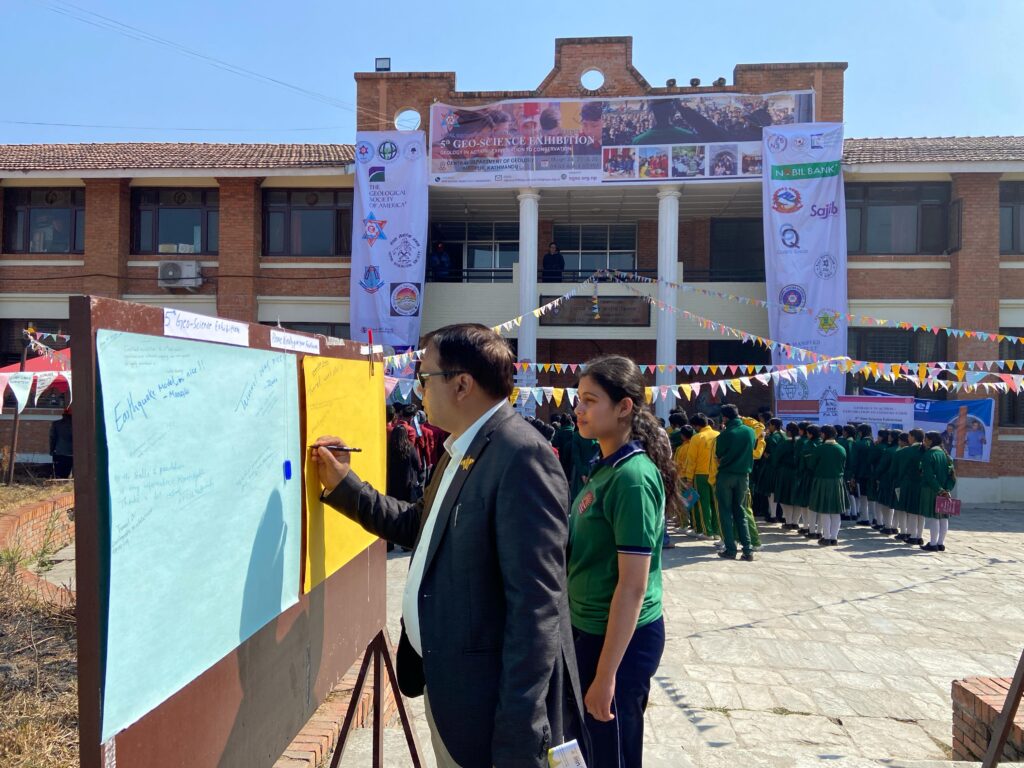
Themed “Geology in Action: From Exploration to
Conservation,” this three-day event was packed with
exhibitions, hands-on activities, and opportunities to
delve deeper into the fascinating world of geology.
The exhibition aimed to promote Earth science at a
grassroots level by:
Raising Awareness: Demonstrating the
importance of geology in our daily lives.
Inspiring Young Minds: Fostering interest in
Earth sciences among students.
Connecting with the Community: Providing a
platform for interaction between geologists,
students, and the public
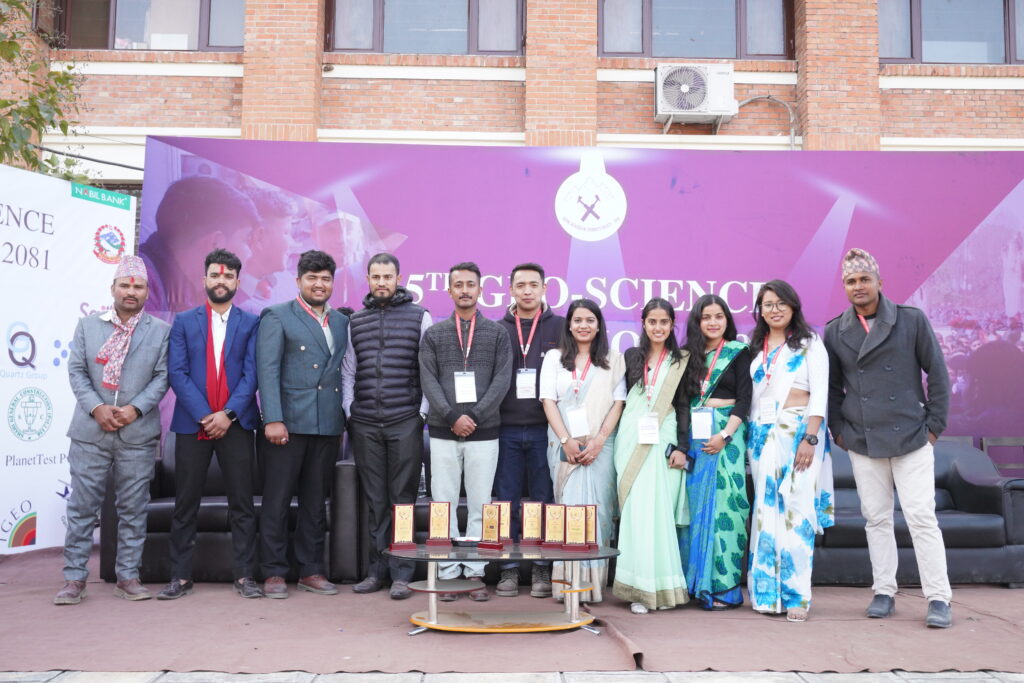
Through interactive displays, technical
presentations, and engaging activities, the
exhibition highlighted how geosciences
contribute to solving contemporary challenges
like natural disaster mitigation, resource
management, and sustainable development.
Visitors were immersed in a world of
discovery, gaining a deeper understanding of
Earth’s processes and the vital importance of
geology in daily life
Participation Details
Several prominent institutions from all over the Nepal participated in the 3 day event, each contributing unique insights and innovations:
- Birendra Multiple Campus, Chitwan
- Prithivi Narayan Campus, Pokhara
- Central Campus of Technology, Dharan
- Trichandra Multiple Campus, Kathmandu
- Department of Civil Engineering, Kathmandu University
- Central Department of Environmental Science, IOST TU
- Central Department of Zoology, IOST TU
- Central Department of Computer Science, IOST TU
- Central Department of Biotechnology, IOST TU
- Central Department of Microbiology, IOST TU
- Central Department of Botany, IOST TU
- Central Department of Geography, Faculty of Humanities and Social Sciences, TU
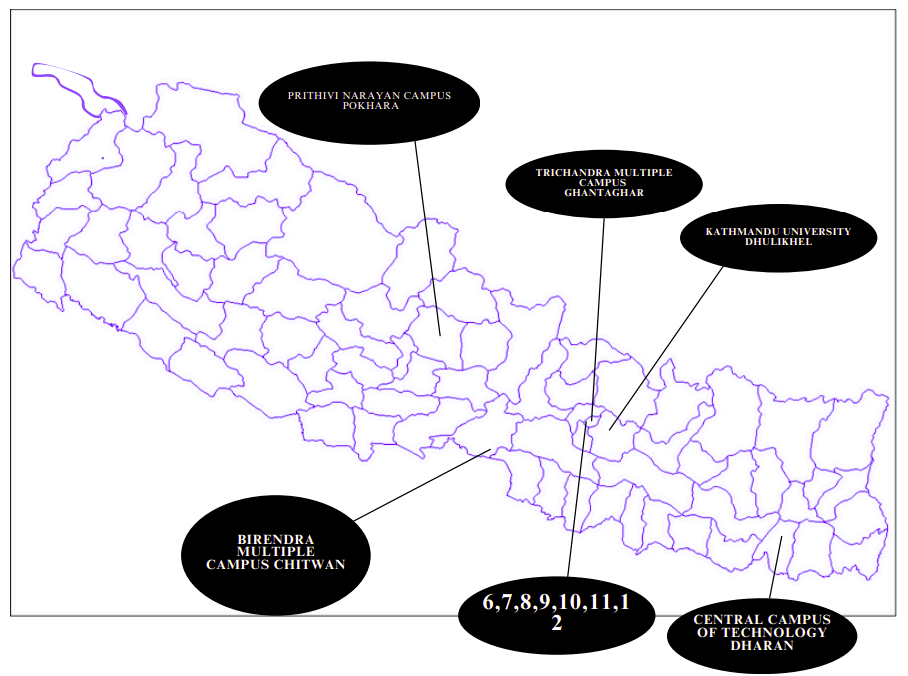
PRE EXHIBITION WORK PLANNING
December 15 to December 20: Planning and Coordination
·During this period, the organizing committee focused on planning and coordinating all aspects of the exhibition. This included initial meetings to determine the structure, the layout of the exhibition, and to assign specific roles and responsibilities to team members.
·Collaboration with institutions and departments was initiated to ensure diverse participation. Preparations began to ensure smooth transitions and operations during the event.
December 20 to January 6: Publicity and Promotion
·This phase was dedicated to raising awareness about the exhibition. A publicity campaign was launched using posters, flyer, and social media platforms.
·Online platforms were leveraged for event promotion, and traditional media channels like newspapers were used to invite public interest and participation.
·Additionally, Google Forms were prepared to recruit volunteers and gather data for model participation.
January 7 to January 25: Fundraising and Income Source Search
·Fundraising activities kicked off by identifying potential sponsors and funding sources. Efforts were directed at securing sponsorship to cover the exhibition costs, including materials, venue, and technical support.
·A concept note was drafted to outline funding requirements, which was shared with potential sponsors and partners.
January 25 to February 5: Institutional Collaboration, Coordination, Model Preparation and Construction
·Institutional collaboration was at the forefront during this phase. The organizing team worked on establishing formal agreements with key institutions like the Dean’s Office, Registrar’s Office, and Ministries to confirm their participation and support for the exhibition.
·The coordination involved facilitating permissions, gathering necessary documents, and ensuring all institutional societies were on board.
·Focus was placed on model preparation and construction. The exhibition models and displays were finalized during this time. This included selecting appropriate models for showcasing various scientific topics.
·Flex banners and promotion cards were printed to ensure proper branding and signage during the exhibition.
·Program scheduling for the event was also developed to outline when specific presentations or activities would take place.

INAUGURATION CEREMONY
The event began with a formal inauguration ceremony, setting the tone for the exhibition. Key highlights
included:
Host: Joint Secretary Mr. Suman Khadka & NGSS member Ms. Laxmi Pokharel
Welcome Remarks: Vice-president Yadav Bhatta from the Nepal Geological Students’ Society (NGSS)
welcomed the attendees, outlining the objectives and significance of the event.
Inauguration by Chief Guest: The Chief Guest officially inaugurated the exhibition with a symbolic gesture,
watering a plant of Hibiscus, marking the official opening of the event.
Keynote Speeches: Dean of Institute of Science and Technology Prof. Dr. Shankar Prasad Khanal, Former
CDG Head Prof. Dr. Megh Raj Dhital, Immediate past Head of CDG Prof. Dr. Khum Narayan Paudayal &
FSU President Shyam Raj Ojha delivered inspiring speeches on the importance of geosciences in Nepal’s
context, particularly in addressing challenges like earthquakes, landslides, and resource management.
Vote of Thanks: The ceremony concluded with a vote of thanks by President of NGSS Mr. Sanam Oli,
expressing gratitude to all stakeholders, followed by the opening of the exhibition stalls.
EXHIBITION STALLS AND DISPLAYS
The exhibition featured a diverse range of thematic stalls, each designed to educate and engage visitors. Key stalls included:
- Earth’s Interior Structure & model of the Mid Oceanic Ridge. –Birendra Multiple Campus, Chitwan
- Structural Geology block diagrams of faults, folds, and unconformities.- Prithivi Narayan Campus, Pokhara
- Volcanology and River Morphology Central Campus of Technology, Dharan
- Hydrogeology and Groundwater Systems Trichandra Multiple Campus, Ghantaghar
- Fossils (Ammonites, elephant tusks, and molars).- Central Department of Geology, TU
- Demonstrates bacterial growth in plain curd and related studies. Central Department of Biotechnology, TU
- Medicinal Plants specimens from Nepal. Central Department of Botany
- Fluvial Morphology and Water Harvesting Central Department of Geography
- Artificial Intelligence and Technology Central Department of Computer Science
- Antibiotic Resistance and Culture Central Department of Microbiology
- Evolutionary Evidence Central Department of Zoology
- Demonstrates hydroelectricity generation methods- MSc. Engineering Geology, Trichandra Multiple Campus
- Mining practices and resource extraction in Nepal Mining Engineering, Kathmandu University
- Models the origin of seismic waves and seismic locking-MSc. Engineering, Central Department of Geology
- Covers mountain hydrogeology, watersheds, and springs. Central Department of Geology
- Tunnel, excavation, support, and bioengineering MSc. Applied Geology, Central Department of Geology
- Himalayan orogeny and 3D ground model of Nepal’s tectonic divisions. Central Department of Geology
- Showcases seismic and electrical resistivity instruments Central Department of Geology
- Geological control of oil and gas deposits. Central Department of Geology
- Demonstrates open-pit mining method Central Department of Geology
- Wedge and plane failure models in rock slopes. Central Department of Geology
- Site Selection and Planning. Central Department of Geology
- Rock and Mineral Samples Central Department of Geology
- Sinkholes Demonstrates sinkhole formation and karst topography Central Department of Geology
- Seismic Resonance for Buildings, Demonstrates seismic resonance and its effect on building stability Nepal Academy of Science and Technology (NAST)
Presentations
GEOLOGY IN SUSTAINABLE DEVELOPMENT
· This presentation highlights the role of geology in sustainable resource management, water conservation, and
responsible mining practices. Emphasis is placed on how geological studies help in mitigating environmental
degradation and ensuring long-term development goals, particularly in water security, energy resources, and
climate resilience.
HIMALAYAN TECTONICS AND SEISMIC RISK
· Focuses on the complex tectonic framework of the Himalayas and its implications for seismic risk in Nepal.
Discusses the causes of earthquakes, seismic hazard mapping, and strategies for minimizing risks through
improved building practices, early warning systems, and disaster preparedness.
GEO-HAZARDS AND CLIMATE CHANGE
· Examines the link between climate change and increased geo-hazards such as landslides, glacial lake
outbursts, and floods. It underscores the need for integrating geoscience into climate adaptation plans to reduce
vulnerability and build resilience in communities prone to climate-induced geological hazards.
Interactive Q&A sessions allowed participants to engage directly with experts, fostering a deeper understanding
of the topics discussed.
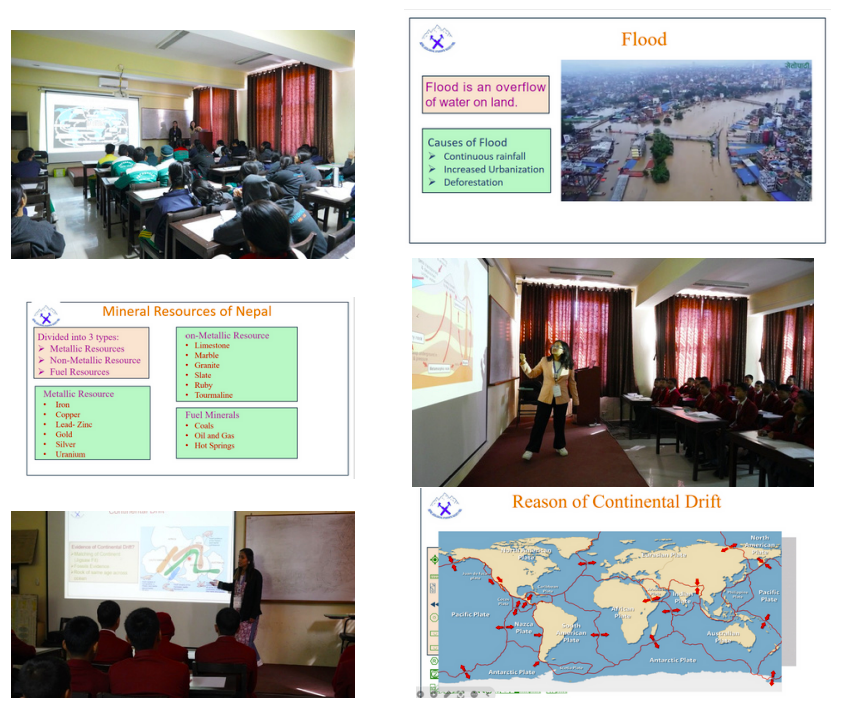
Number & Statistics
The exhibition drew a wide range of participants from different sectors, showcasing a strong interest in
geosciences:
First Day (41% of total attendance):
The exhibition kicked off with an exciting start, drawing in a diverse crowd of school students, college
attendees, and university participants. The energy was high, as many of the 1036 visitors eagerly explored the
various exhibits and engaged in lively discussions. The first day really set the tone for the event, showcasing the
enthusiasm for geoscience and the potential for learning and collaboration.
Second Day (36% of total attendance):
The second day was buzzing with activity, as more students from schools, colleges, and universities came
through the doors. The exhibition halls were filled with curious minds, eager to soak up the knowledge shared
by the exhibitors. A total of 905 attendees participated on this day.
Third Day (23% of total attendance):
By the third day, the atmosphere shifted as it became more focused on the general public. With 575 visitors and
professionals though the turnout was smaller, the interest was still strong, and the exhibits continued to provide
valuable information. It was a great way to end the exhibition, as it reached a new audience who may not have
otherwise explored the wonders of geosciences.
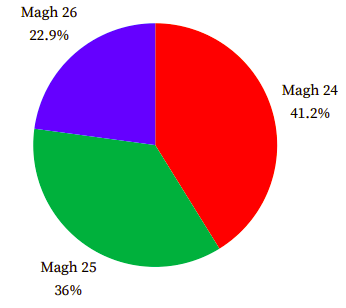
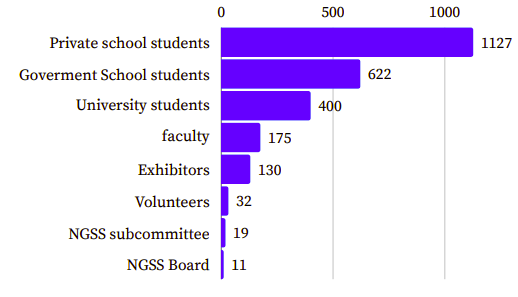
·Undergraduate and Postgraduate Students: 220 undergraduates and 180 graduates in geology and related fields actively participated.
·Faculty Members and Researchers: 175 faculty and researchers from universities and research institutions
·School Students: 622 government school students with free entry. 1127 students from private schools and colleges
·Volunteers and Exhibitors: 32 volunteers ensured smooth operations, while 130 exhibitors contributed engaging displays.
·NGSS Board Members and Subcommittee: 11 NGSS board members and 19 subcommittee representatives facilitated the event’s success.
·Total: 2516
Media Coverage
The event received extensive media coverage, ensuring widespread visibility and
public engagement. Key media activities included:
· Coverage in local and national newspapers.
· Social media campaigns
· Attendees actively shared their experiences on social media, further amplifying the
event’s reach and impact.
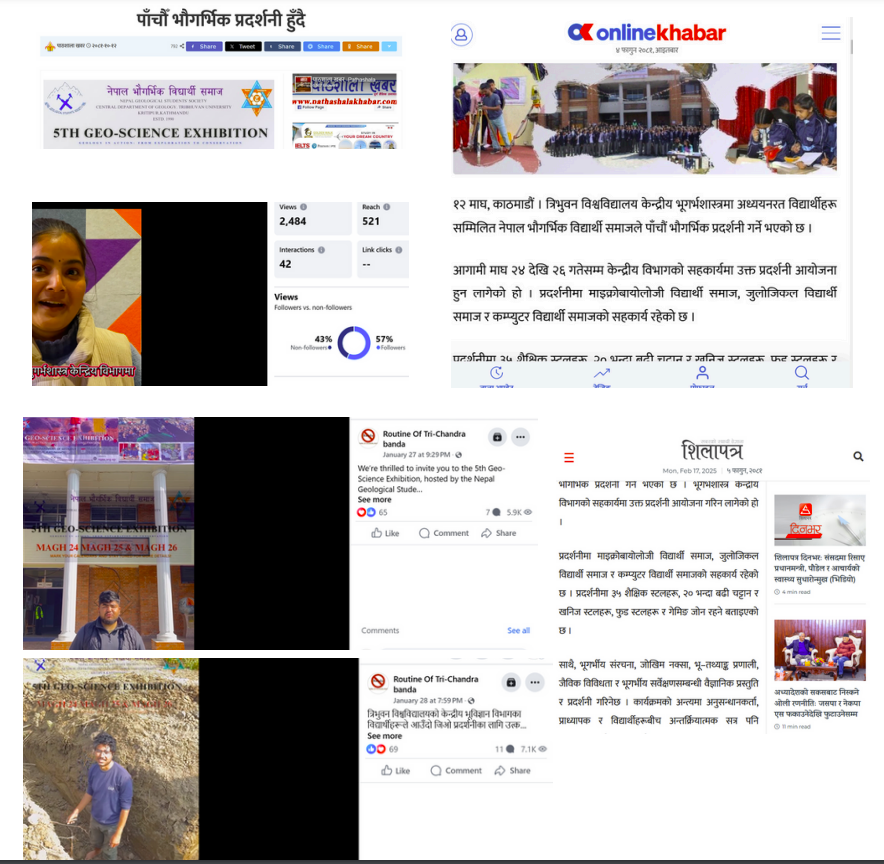
Sponsers & Supporting Partners

Closing Ceremony
The closing ceremony of the 5th Geo-Science Exhibition was a grand and memorable conclusion to three days of scientific exploration, learning, and interaction. The event was graced by the presence of Mr. Akkal Dev Mishra, Principal of Central Campus, Tribhuvan University, who chaired the ceremony. Distinguished faculty members, guests, industry experts, students, and participants gathered to reflect on the achievements of the exhibition and acknowledge the contributions of everyone involved.
In his closing remarks, Principal Akkal Dev Mishra highlighted the significance of geoscience exhibitions in fostering academic curiosity, innovation, and practical knowledge among students. He emphasized the importance of such platforms in bridging the gap between theoretical learning and real-world applications. Appreciating the efforts of the organizing team, he commended the Nepal Geological Students’ Society (NGSS) for their dedication and successful execution of the event.
The exhibition featured numerous innovative and well-researched models. Among them, the Tunnel Model secured first place, demonstrating the crucial role of tunnel engineering in Nepal’s infrastructure development. The Seismic Model and Hydrogeology Model both stood in second place, highlighting the importance of earthquake preparedness and water resource management, respectively. Meanwhile, the Mining Model from Kathmandu University secured third place, showcasing advancements in sustainable mineral extraction and its impact on Nepal’s economy. Certificates of appreciation were distributed to volunteers, exhibitors, and distinguished contributors.
To conclude the event on an inspiring note, Sanam Oli, President of NGSS, delivered a closing statement. With unwavering confidence, he emphasized that “Geoscience is not just about understanding the Earth; it is about shaping its future. This exhibition is a testament to the power of knowledge, teamwork, and vision. We are not just students; we are the future of Nepal’s geological advancements.” His words resonated deeply with the audience, reinforcing the importance of continued dedication and scientific inquiry.
With this, the 5th Geo-Science Exhibition came to an end, leaving behind a legacy of knowledge, enthusiasm, and inspiration for future geologists.
